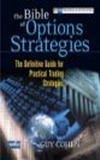Techniques of Tape Reading

Due to family commitments, I’ve been busy traveling to & fro daily. Having less time on hand, I wanted to make full use of my traveling time. I completed my reading of Techniques of Tape Reading (by Vadym Graifer & Christopher Schumacher) on the train rides. This is a day trading book recommended by Trader Jamie (a seasoned stock day trader) and I thought that with such volatile markets where triple digit swings from day to day is becoming a norm, day trading is the way to go in such a difficult market.
This book is divided into three parts:
1) A Trader’s Journey – The initial part of this is a story telling section. It talks about how author Vadym, who fled the former USSR settled down in Canada, chose stock trading as a profession in a new society, how he lost most of his trading capital before becoming a successful trader. The authors placed much emphasis on trading psychology in the later part of this section.
2) Trading System – Part Two is all about the different trade set-ups such as Jump-Base-Explosion, Drop-Base-Implosion, Open-High Break & Open-Low Break, Cup-and-Handle, Capitulation. Methods of Entry, Stop Loss Placement and Trailing Stops are covered as well.
3) Practical Examples – This is the section that makes this book stands out from the rest. There are 33 trade examples which are discussed extensively. Each trade example is covered in details in about 2-3 pages, and I enjoyed reading it because it is like a trade journal. Trade journals can help to improve one’s trading by leaps and bounds. I’ll talk more about trade journals next time. Back to this book. The authors share what went through their mind during those trades, the trade setup, entry point, stop loss, trail stop, exit, position sizing, missed trades etc. I have not read a trading book that devotes an entire section to trade examples with write-ups like this.
What I like about this book is the simplicity of technical analysis tools it utilizes. If you are looking for complex technical indicators in this book to help your trading, then this book is not for you. Other than the occasional mention of Moving Average and Fibonacci, the authors look mainly at price, volume and support & resistance. I am also a firm believer of keeping things simple and use only basic technical indicators like moving average, Fibonacci, trend lines, support & resistance and basic candlestick patterns in my trading. Why? Because many technical indicators out there are merely derivatives of price and/or volume. MACD and Stochastics are the most complicated ones I’ve used and I use them only at times to identify divergence.
Grade: A


















0 Comments:
Post a Comment
<< Home